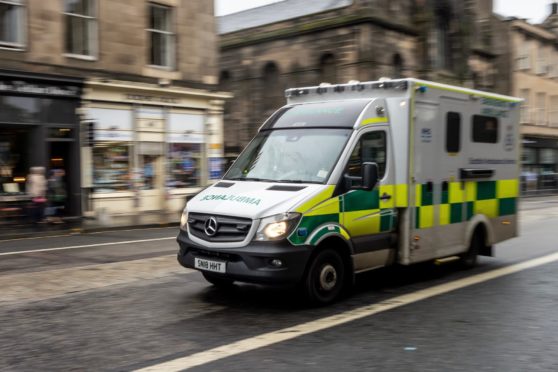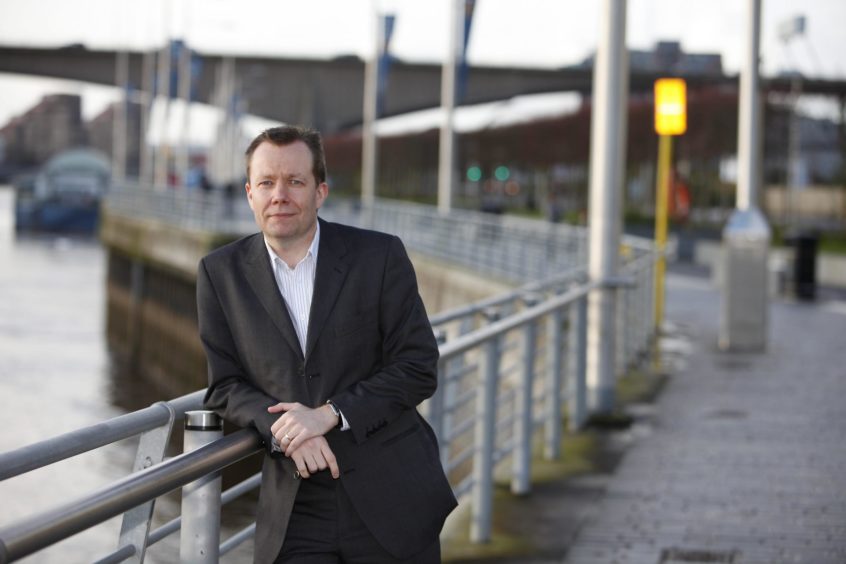
The poorest Scots are most at risk of losing their lives because of Covid-19, frontline doctors revealed yesterday.
Hospital doctors, in intensive care and accident and emergency, said the patients worst affected by coronavirus are often working during the lockdown in low-paid but critical jobs. One medic, working in one of Scotland’s Intensive Care Units, told The Sunday Post he has not yet treated a professional person of working age.
Speaking as the number of Covid-19-related deaths in Scotland rose by 56 to 893, he said: “We do not have data on this but almost all of our patients are from the lower socio-economic groups and a high proportion are in frontline tasks.
“We’ve had supermarket staff, a bus driver, taxi drivers, care workers and a number of others. Very few, if any, professional patients in the working-age group.”
Another doctor, in one of Scotland’s busiest accident and emergency departments, has treated many Covid-19 patients when they first arrive at hospital.
He said: “There is a bit of black humour at times and one of my colleagues suggested that it was easy to get confused about who you are treating because most of the patients badly affected by the virus look the same.
“Most of those we are getting in are middle-aged men, 55 and up, overweight, a bit of a belly, often undiagnosed diabetics. They are just normal working guys who may not have looked after themselves the way they could have.”
Scotland’s poorest postcodes have the lowest life expectancy in the country. People with underlying health conditions are most at risk from Covid-19.
Scotland’s National Clinical Director professor Jason Leitch said people living in poverty are more likely to be in poor health, making it more difficult to fight off Covid-19.
He was not surprised by what doctors are seeing on the wards. He said: “You would expect society to be affected unequally. When you start to look at population level data, the poorer have a worse outcome from disease, no question. And Glasgow has some of the widest inequalities we have come across.
“This could be part of the reason Greater Glasgow has the highest death rate from Covid-19 per 10,000 people.
“There’s no hard data yet, however I think when the history is written it will probably be true that people in poverty will be harder hit by Covid-19.”
Professor Leitch also conceded that the lockdown, although vital to protect the health of the nation in the short term, will have long-term consequences.
He said: “I think the counter- measures have cost. So there is harm from Covid-19, there’s harm from the challenges for the health service potentially being overwhelmed – although I think we’ve countered much of that arc with the redesign of the health service – and then there is harm from the countermeasures.
“There isn’t any doubt we’ll have increased loneliness. Mental health will almost certainly be a challenge. There may be a challenge with domestic violence, with addiction. And many of those affect the poor more. So, you could easily make an argument that the countermeasures will have an affect on people’s real lives.”
Former Chief Medical Officer Sir Harry Burns also warned that people in poverty are more likely to die if they get the virus, because they are more likely to have underlying health conditions.
He said: “If you take 1,000 people who had Covid-19 and look at their socio-economic status, the ones who are at the lower end of the social scale are probably more likely to die of it.
“We’re seeing that people with Covid-19 who have multiple under-lying conditions are much more likely to die. Things like heart disease, diabetes, things that cause difficulty with your immune system.
“They make it harder for you to survive a bad virus like this.”
But the increased risk from coronavirus is only one of the pandemic’s features likely to have the most stringent impact on Scotland’s most deprived neighbourhoods.
Figures released this week by National Records Scotland show that the Greater Glasgow and Clyde health board, an area which contains many of Scotland’s most deprived communities, has had 2.7 deaths from the virus for every 10,000 people. In contrast, Lothian health board, Scotland’s second largest, has had only 1.6. Glasgow has four of the 10 most deprived areas in Scotland. Edinburgh has none.
Allyson Pollock, professor of public health at Newcastle University, said: “We know from research into flu epidemics that people with a lower socio-economic status come out worse. It is a fact in any case that ill-health and illness is concentrated more among the poor.
“There is also the collateral damage of what we’re doing with the lockdown because people’s living conditions are often not ideal. If you’re living in overcrowded households with lack of access to fresh air and good food that’s going to affect your physical and mental health.”
Official figures show 20% of people in Scotland live in poverty – and 58% of people in poverty, and 70% of children in poverty, live in a household where someone is in employment.
Professor Pollock said: “Lower-paid workers will do much worse because they are not able to self-isolate. So, people who are poor and in jobs – maybe delivery drivers or care workers on zero-hours contracts – are keeping going and therefore more likely to get it.
“Also, people on zero-hours contracts are more likely to keep working when sick because they don’t receive sick pay. Therefore, they are more likely to get the disease and end up transmitting it. They are terribly exposed.”
Philip Taylor, professor of Work and Employment Relations at Strathclyde University, said: “Low-paid, taken-for-granted NHS staff, carers and logistics workers whose work lives have been blighted by austerity have now become society’s saviours.
“That the poorest in our society are compelled to come to work often in the most dangerous conditions should not surprise us given the record levels of in-work poverty.”
Gary Smith, of trade union the GMB, said the lowest-paid workers in Scotland are making the greatest sacrifices for less than £10 an hour.
He said: “Social care, refuse and cleansing, hospital cleaners and porters, retail workers have confronted this crisis head on despite a decade of austerity. Their response has been courageous and selfless, and that simply cannot be ignored by our politicians.”
Neil Cowan, policy officer at the Poverty Alliance, a network of anti-poverty campaigners, also raised concerns that the most deprived will be the hardest hit by the virus.
He said: “Although we’ve been told Covid-19 doesn’t discriminate, living in poverty does increase your risk of becoming seriously ill, either directly or indirectly, as a result of Covid-19.
“A number of conditions that put people of higher risk from Covid-19 are conditions fairly closely associated with living in poverty, such as cancer, heart disease, high blood pressure, diabetes and chronic obstructive pulmonary disease.
“Indirectly, there is also the heightened risk to people locked in in-work poverty who are on the frontline of this, such as low-paid care workers, cleaners and delivery drivers.”

Enjoy the convenience of having The Sunday Post delivered as a digital ePaper straight to your smartphone, tablet or computer.
Subscribe for only £5.49 a month and enjoy all the benefits of the printed paper as a digital replica.
Subscribe